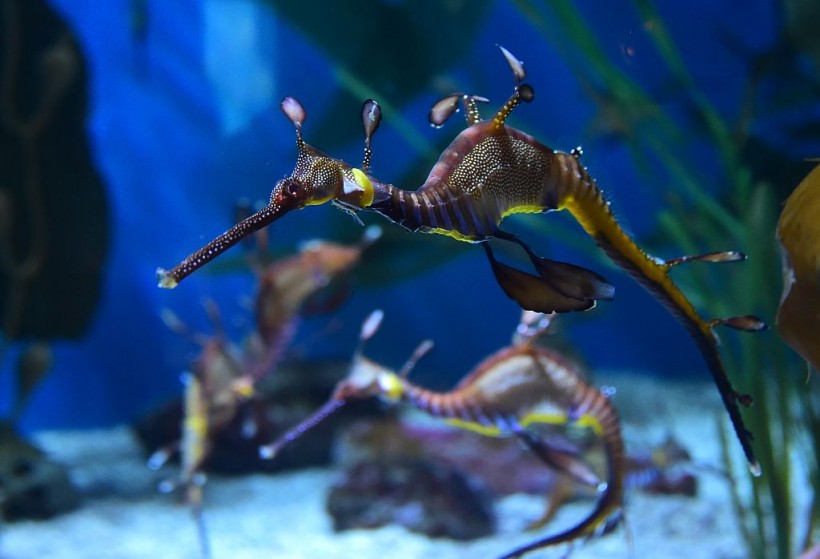
Several genetic clues make sea dragons the oddballs of the ocean.
Because of several genetic clues that make them distinct, sea dragons are sometimes referred to as the oddballs of the ocean.
Sea dragons may be bedazzling, but they also lack ribs, and fangs, and have bent and kinked spines.
Genetic Clues
Now, scientists have discovered genetic hints that may explain why sea dragons appear to be so strikingly unique - in addition to having genomes packed with repetitive DNA segments that drive evolution, sea dragons also lack a set of genes that are responsible for the development of nerves, teeth, and facial features that are present in other animals.
A group of scientists who worked on the study claims that studying the sea dragon genomes has shed light on the evolution of the traits unique to these unusual vertebrate species and revealed fascinating aspects of the family's evolutionary history. Co-leading the study with colleague Susan Bassham was University of Oregon evolutionary genomics researcher Clayton Small.
Syngnathidae and Male Pregnancy
Sea dragons are members of the Syngnathidae family, which includes pipefish and seahorses, and are notable for having evolved male pregnancy.
According to Small, sea dragons are outliers among a group of fish that are already outliers.
To find out why, Small, Bassham, and colleagues sequenced the genomes of both the leafy and weedy or common sea dragon, which they sourced from frigid seas off the southernmost shores of Australia.
As they glide through kelp-covered rocky reefs and hide themselves with leaf-like fronds, these slender fish can be difficult to spot.
They are so secretive that the third species of sea dragon, the rare ruby sea dragon, was first spotted in the wild only in 2017, according to Science Alert.
Fantastical Body Forms and Extravagant Frills
The three varieties of sea dragons are prized for their fanciful, vibrant body forms and their lengthy tubular snouts, which are utilized for suckling on crustaceans. The absence of leafy appendages in the ruby sea dragon, however, suggests that evolution has taken away the ostentatious frills.
Since they and sea horses split off to establish a different family some 50 million years ago, scientists believe sea dragons rapidly evolved their ostentatious traits.
Jumping Genes
Compared to their nearest relatives, sea dragons contain a very high amount of transposons, sometimes known as "jumping genes," in their genetic code.
Transposons can quickly change an organism's genetic makeup by hopping across its genome. According to scientists, this is why sea dragons evolved so quickly.
The genomes of leafy and weedy sea dragons lack a significant portion of genes that play essential roles in other vertebrates, including signals on how to form limbs, facial structures, teeth, and even portions of the central nervous system, in contrast to two distant relatives, zebrafish and sticklebacks.
Also Read: Sunflower Sea Star Population Down to 10% Due to Fatal Syndrome That Turns Them to Goo
Rapid Evolution and Unique Body Structures
According to Bassham, the leafy paddles of sea dragons are supported by structures that resemble elaborated spines with fleshy appendages attached to the tips.
The scientists also discovered that these bony supports were different from the hardened, ossified bones present in the fins of other bony fish and instead appeared to be strengthened by a core of collagenous tissue, adding to the account of how the sea dragon's distinctive body architecture came to be, Science Alert reports.
According to the University of Oregon, experts believe that making the genome sequences of sea dragons available to the general public will be beneficial for future work not just in the field of evolution and developmental genetics but maybe also in the quest to comprehend and protect the endangered species.
The study by Small, Bassham, and several other colleagues, was published in the journal Proceedings of the National Academies of Sciences.
Related Article: Starfish Facts: Misnamed Stars of the Oceans
© 2024 NatureWorldNews.com All rights reserved. Do not reproduce without permission.





